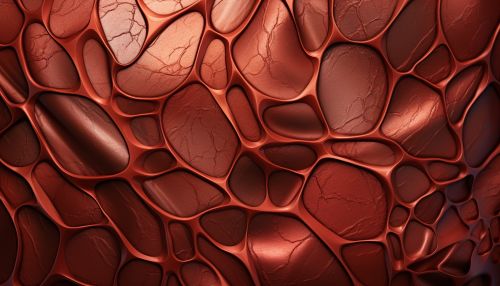Liver
Anatomy
The liver is the largest gland in the human body, located in the upper right quadrant of the abdomen. It is a vital organ that supports nearly every other organ in the body in some capacity. The liver is a reddish-brown organ and has a rubbery texture to the touch. It is divided into two main lobes, which are further subdivided into approximately 100,000 small lobes, or lobules. About 60% of the liver is made up of liver cells called hepatocytes, which absorb nutrients and detoxify and remove harmful substances from the blood.


Functions
The liver performs a wide range of complex functions that maintain the body's internal environment and enable survival. Some of the key functions include:
- Metabolism: The liver metabolizes carbohydrates, lipids, and proteins into forms that can be used by the body for energy or other functions. It also metabolizes drugs and toxins to facilitate their removal from the body.
- Bile production: The liver produces and secretes bile, a greenish fluid that aids in digestion, particularly of fats.
- Excretion: The liver excretes waste products and toxins from the body, including those produced by metabolism and those ingested or inhaled.
- Storage: The liver stores various substances, including glucose in the form of glycogen, vitamins, and minerals.
- Blood supply: The liver receives about 25% of the cardiac output and holds about 10% of the total blood volume at any given time. It plays a crucial role in maintaining blood volume and pressure.
- Immunity: The liver contributes to the immune function by producing immune factors and removing bacteria from the bloodstream.
Diseases and Disorders
There are many diseases and disorders that can affect the liver, including:
- Hepatitis: This is inflammation of the liver, most often caused by a viral infection. There are several types of hepatitis, named for the viruses that cause them, such as Hepatitis A, B, and C.
- Cirrhosis: This is a late stage of liver disease characterized by scarring of the liver and poor liver function.
- Liver cancer: There are several types of liver cancer, with hepatocellular carcinoma being the most common type.
- Fatty liver disease: This occurs when fat builds up in the liver. It can be caused by alcohol abuse or other conditions such as obesity and diabetes.
- Liver failure: This is a life-threatening condition that requires hospitalization. It can occur suddenly (acute liver failure) or over time (chronic liver failure).
Diagnosis and Treatment
Diagnosis of liver disease may be based on symptoms, medical history, physical examination, and various tests. These tests may include blood tests, imaging tests such as ultrasound or CT scan, and liver biopsy. Treatment depends on the specific type of liver disease and may include lifestyle changes, medications, or in severe cases, liver transplant.
